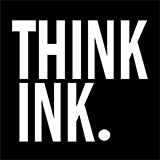Tariffs, Tech and Turbulence
Jun 23, 2025 / By Crystal White
3 Min Read
How global trade uncertainty is reshaping martech in 2025
U.S. tariff policy is rapidly changing. The points detailed in this post were accurate at the time of publication.
In martech, disruption is worn like a badge of honor. New platforms that streamline sales, smarter ad-targeting algorithms and tools that reinvent everyday operations have all fueled the sector’s explosive growth.
But today’s disruption isn’t coming from industry leaders; it’s coming from Washington D.C. From rising semiconductor costs to retaliation against U.S. professional services and IP, the Trump-era tariff playbook is hitting martech across the value chain. As the economy cools in response and we are faced with a potential recession, a big question has entered boardrooms: how do you expand when expanding the sales team is off the table due to hiring freezes?
The answer starts with intelligence grounded in customer data and competitive research. But before we get there, let’s look at what’s unfolding.
Tariffs disrupt AI and SaaS economics
Martech’s AI acceleration means it’s directly exposed to U.S.-imposed tariffs on semiconductors and chipmaking equipment, most of which are sourced from Taiwan. According to Barron’s, a 25% semiconductor tariff could increase the cost of a hyperscale AI data center by roughly $750 million on top of the existing $3–3.5 billion price tag.
For AI-driven platforms, that creates real pressure on pricing and delivery models. SaaS providers are also dealing with higher cloud infrastructure costs as storage and server hardware prices rise. Many are now faced with a no-win choice: absorbing the cost or passing it to customers—both risk eroding their ability to compete.
Global response, global risk
 Tariffs don’t happen in a vacuum. Martech firms operating outside the U.S. may soon face not only cost increases but new legal and regulatory hurdles in key growth markets. American professional services, which currently enjoy a $293 billion trade surplus with the rest of the world, could be a target for reciprocal tariffs levied onto the consulting arms of martech companies. Of further concern, The European Union has floated use of its “anti-coercion instrument” to revoke U.S. firms’ intellectual property protections, block foreign investment and impose barriers to digital services. It could also exclude U.S. companies from public procurement bids, which are worth €2 trillion ($2.29 trillion USD) annually.
Tariffs don’t happen in a vacuum. Martech firms operating outside the U.S. may soon face not only cost increases but new legal and regulatory hurdles in key growth markets. American professional services, which currently enjoy a $293 billion trade surplus with the rest of the world, could be a target for reciprocal tariffs levied onto the consulting arms of martech companies. Of further concern, The European Union has floated use of its “anti-coercion instrument” to revoke U.S. firms’ intellectual property protections, block foreign investment and impose barriers to digital services. It could also exclude U.S. companies from public procurement bids, which are worth €2 trillion ($2.29 trillion USD) annually.
Meanwhile, before Beijing and Washington’s most recent trade deal, which at publishing time had not yet been formally signed, Chinese state media hinted that U.S. legal and consultancy firms could be targeted, and U.S. companies in China subjected to regulatory scrutiny over IP protections. Despite this deal, the volatility of the relationship between the two countries means that the future relationship continues to be uncertain.
For martech platforms built on proprietary algorithms or centralized analytics, these developments are more than complications; they’re existential threats. Pulling back from overseas markets may become an unavoidable casualty of the new American macroeconomic policy.
Strategic paralysis in the C-suite
Tariffs are a supply chain problem, but they are also a strategy problem. With the Trump administration’s erratic approach to tariffs sowing confusion and uncertainty in seeming perpetuity, long-term investments are being shelved: Pricing strategies are harder to plan, and product launches are delayed in favor of features that deliver immediate ROI.
 Preceding this latest tariff wave, Gartner forecasted a nearly 10% increase in global IT spending for 2025. But as it warned, inflation and cost hikes would absorb much of that increase. With tariffs likely to push costs even higher, that “growth” may never materialize—especially if recession fears intensify.
Preceding this latest tariff wave, Gartner forecasted a nearly 10% increase in global IT spending for 2025. But as it warned, inflation and cost hikes would absorb much of that increase. With tariffs likely to push costs even higher, that “growth” may never materialize—especially if recession fears intensify.
The result? Martech vendors are competing for smaller budgets with slower buying cycles, while their own expenses rise. In this environment, expanding the sales team often feels risky, if not irresponsible. So, how can leaders overcome this impasse?
The path forward: research-driven revenue strategy
Martech has always adapted to change. But the current wave of tariff-driven disruption is different: global in scope, systemic in impact and deeply political. In volatile, unpredictable conditions, companies that grow are those that listen to the market and move quickly based on data-backed insights.
In the immediate term, identifying which verticals offer the most promise for 2025–2026; what features are non-negotiable for customer retention; and how this ties back to your value story can help you better navigate today’s choppy waters.
Martech firms that want to do just more than survive, however, will need real visibility on:
- Which buyer segments are still willing to spend
- What triggers their decisions
- Where competitors are losing ground
- What product attributes matter most in the current environment
- How to reposition offerings to appeal to value-conscious customers without resorting to price cuts
THINKINK’s research services can help answer those questions and more, catapulting research from a support function to a strategic weapon that helps you adapt faster, sell smarter and find new paths to growth whatever challenges lie ahead.
Want to explore how THINKINK’s research services can support your martech strategy in a high-tariff world? Let’s talk.
Sign up for our insights on the convergence of business and PR






